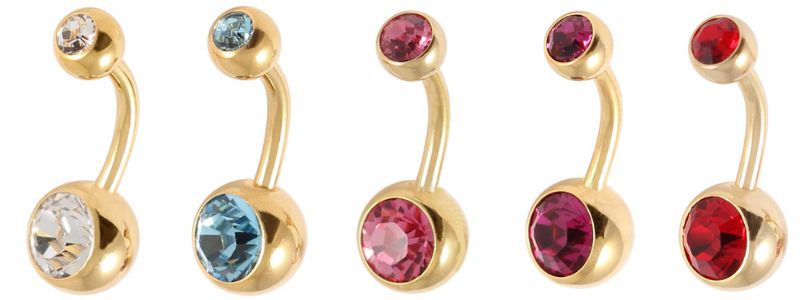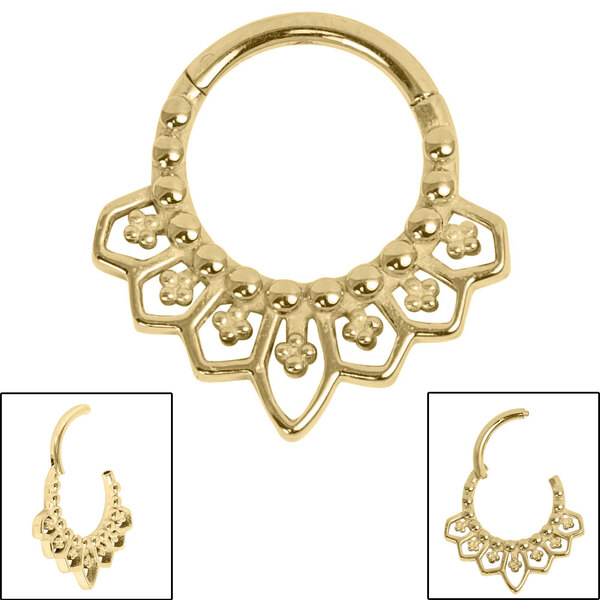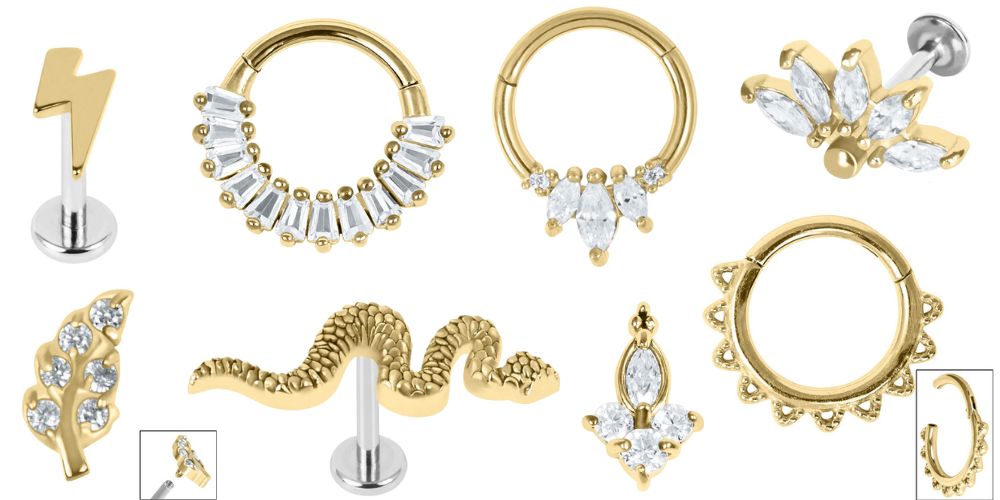
Gold Body Jewellery
Here at TDi we have several yellow Gold body jewellery options including Gold Sterling Silver, Gold Surgical Steel, Gold Titanium, 22ct Gold Steel and solid gold. Then there’s Zircon Gold Steel and Zircon Gold Titanium. So what’s the difference between them all?
First thing you’ll probably notice is the difference in colour.
Why Does My Yellow Gold Jewellery Look A Different Colour?
The answer is simple, it’s likely the gold on each item you’re comparing is a different carat of gold.
Please note that Zircon gold is a different product entirely! You may wish to check out our dedicated post ‘Zircon Steel & Zircon Titanium‘ for more info.
What Is A Gold Carat?
The carat (ct) of gold denotes the percentage of pure gold in the metal.
24ct gold has 99.9% of pure gold
22ct gold has 91.6% of pure gold
18ct gold has 75% of pure gold
14ct gold has 58.3% of pure gold
9ct gold has 37.5% of pure gold
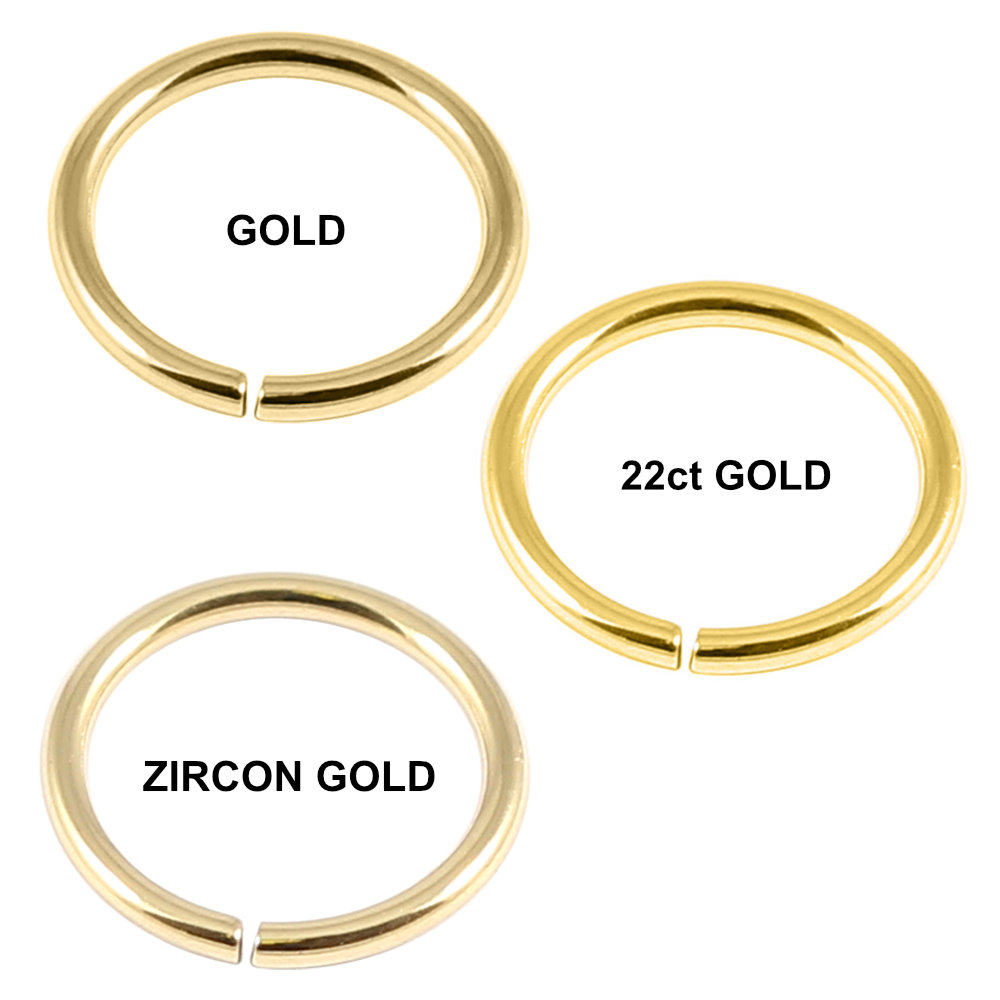
What Difference Does The Gold Carat Make In The Colour Of The Gold
The higher the carat of gold, the stronger the yellow gold colour will appear. For example 22ct gold jewellery has 91.6% of pure yellow gold in it, this makes it a strong & vibrant gold colour. An item made from 14ct gold has 58.3% pure yellow gold in it and this makes the colour appear a lighter shade of yellow gold. See the picture above, the item marked ‘Gold’ is the 14ct gold colour.
Is It Better To Have A Higher Carat Of Gold In My Body Jewellery?
It’s a balance between the durability of the metal and the gold colour you wish to wear.
The thing about pure gold is that it’s a relatively soft metal so 24ct gold (99.9% pure gold) is not as strong & durable, therefore it’s not generally used to make jewellery. At the other end of the scale 9ct gold (37.5% pure gold) is much stronger and very good for jewellery pieces.
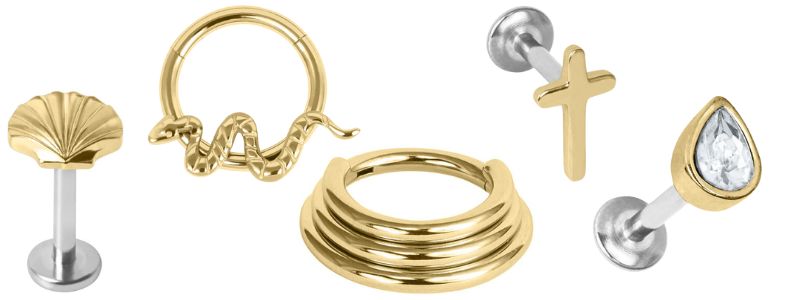
So What Carat of Gold Jewellery Should I Choose?
Of course, that’s up to you! Each carat of gold produces a different yellow tone in the gold colour so it’s good to choose a balance between the colour and durability. For us, we think that 14ct gold is a beautiful yellow gold colour and also a strong and durable metal, ideal for body jewellery.
For this reason we’re moving to using 14ct gold plate on our gold plated jewellery in stock now and on future pieces. These items will be marked as ‘Gold Steel or Gold Titanium’ in the product title.
22ct Gold Body Jewellery
We currently also have items marked ’22ct Gold’ and as you now know that means these items are coated in 22ct gold. These 22ct Gold pieces are still durable and the colour is a deeper shade of yellow gold. We will be discontinuing 22ct gold items over time.
Why Choose Gold Body Jewellery?
Solid gold jewellery can be expensive so gold piercing jewellery is a cost effective way for you to get the look for less!
How Do You Coat Gold Body Jewellery?
The gold is deposited onto the jewellery using a technical process called Physical Vapour Deposition (PVD).
What’s Physical Vapour Deposition (PVD)?
Physical Vapour Deposition (PVD) is a highly technical process used to coat the jewellery in a layer of gold. The gold PVD coating is extremely durable and scratch resistant.
The PVD process is fairly straight forward. First you put the jewellery in a heated vacuum chamber and then you apply an electric voltage to create plasma.
This has the effect of creating an ion bombardment which results in atomizing the cathode material into tiny particles. n.b. the cathode material is the gold that is used to coat the jewellery.
These tiny particles are deposited onto the jewellery producing a thin and shiny coating of gold on the product.
Fast Fact About Gold!
Used by artisans for thousands of years, gold, is one of the most widely used metals today.
Gold is indestructible, totally recyclable and can be hammered and rolled so finely you can see through it! I’m not sure why you would want to see through it, but I thought it was an interesting fact.

